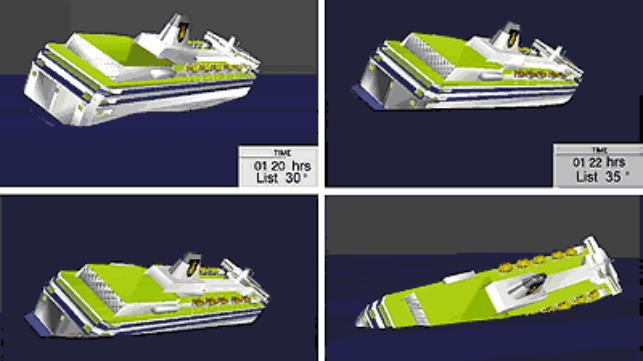Sweden Closes Case of MV Estonia Sinking

Prosecutors in Sweden have decided not to reopen a new investigation into the fate of the ferry Estonia, which went down in the Baltic with massive loss of life in 1994. The ferry's loss has been the subject of controversy for 30 years, and researchers and family members have proposed competing theories that challenge the official explanation.
On the night of September 27, 1994, the ro/pax ferry Estonia got under way from Tallinn to Stockholm. The weather was rough, with winds of up to 40 knots and waves of up to 20 feet. The vessel would never arrive.
At about 0055 hours on the 28th, passengers heard a loud bang. 15 minutes later, the vessel's bow visor came loose, leading to flooding in her wide-open vehicle decks. She rapidly listed to starboard, reaching 60 degrees over the course of 15 minutes. At 0150, less than an hour after the first signs of trouble, she slipped below. Only 137 out of the 989 people on board Estonia survived.
The official investigation blamed the sinking on the mechanical failure of the ship's bow visor, the hinged shield that protected the car ramp and gave access to the ro/ro decks on the interior. The ship's designer had used the load calculations for typical non-opening bows for its construction, and called for mild steel components throughout - even for the attachment mechanisms, which were subject to high loads.
During the initial site dives in the 1990s, the bow visor was found torn off the ship at a distance from the rest of the wreck; it was recovered and photographed, then scrapped. In a widely-watched report by news outlet Fokus Estonia, demolition experts suggested that photographs of the (now-scrapped) bow visor showed damage patterns that would only be consistent with an explosion. However, a joint Estonian, Finnish and Swedish report released in 2023 pushed back on these controversial claims and endorsed the original conclusion: the bow visor failed due to mechanical fatigue.
Swedish prosecutors have now accepted this conclusion as well, and have declined to reopen the case, citing lack of evidence for an alternative explanation.
"Based on the actions of the investigative bodies, there is no indication that a collision with a ship or floating object or an explosion on the bow occurred. There's also nothing else to suspect that a crime was committed. Therefore, preliminary investigations will not start, and the case will be closed," said lead prosecutor Karolina Wieslander.
